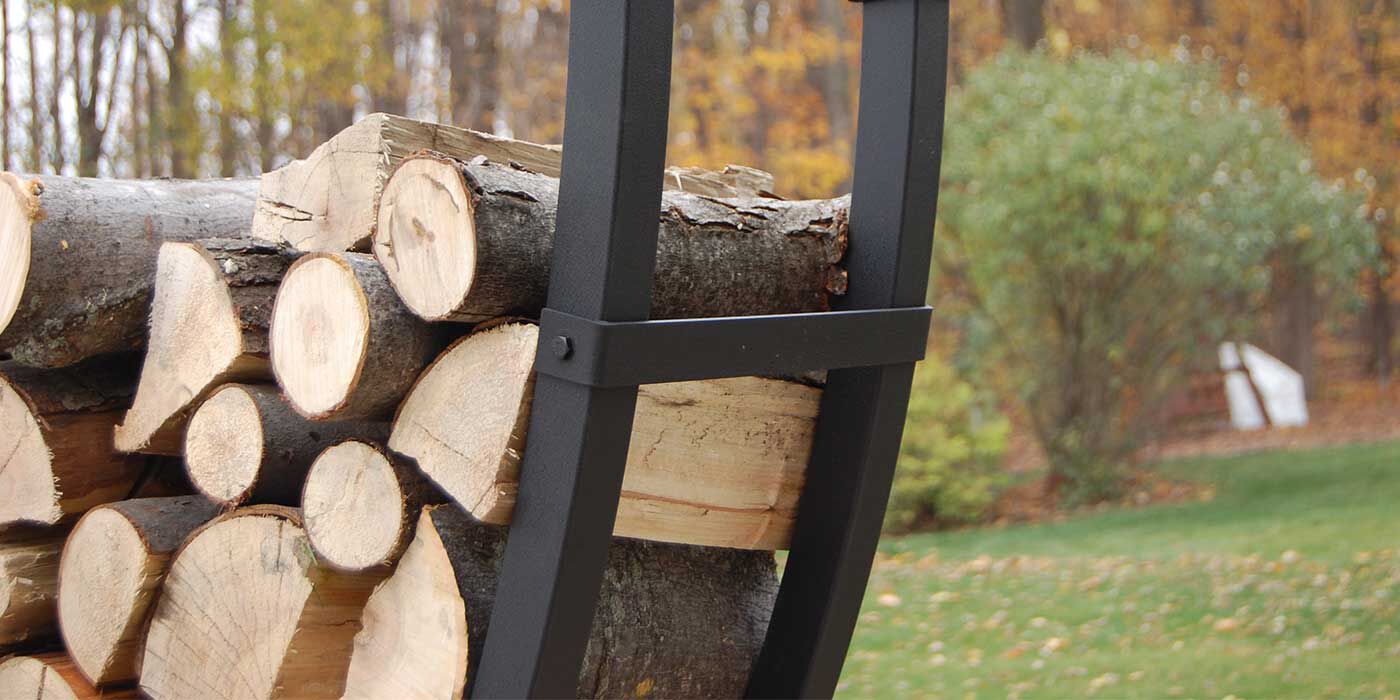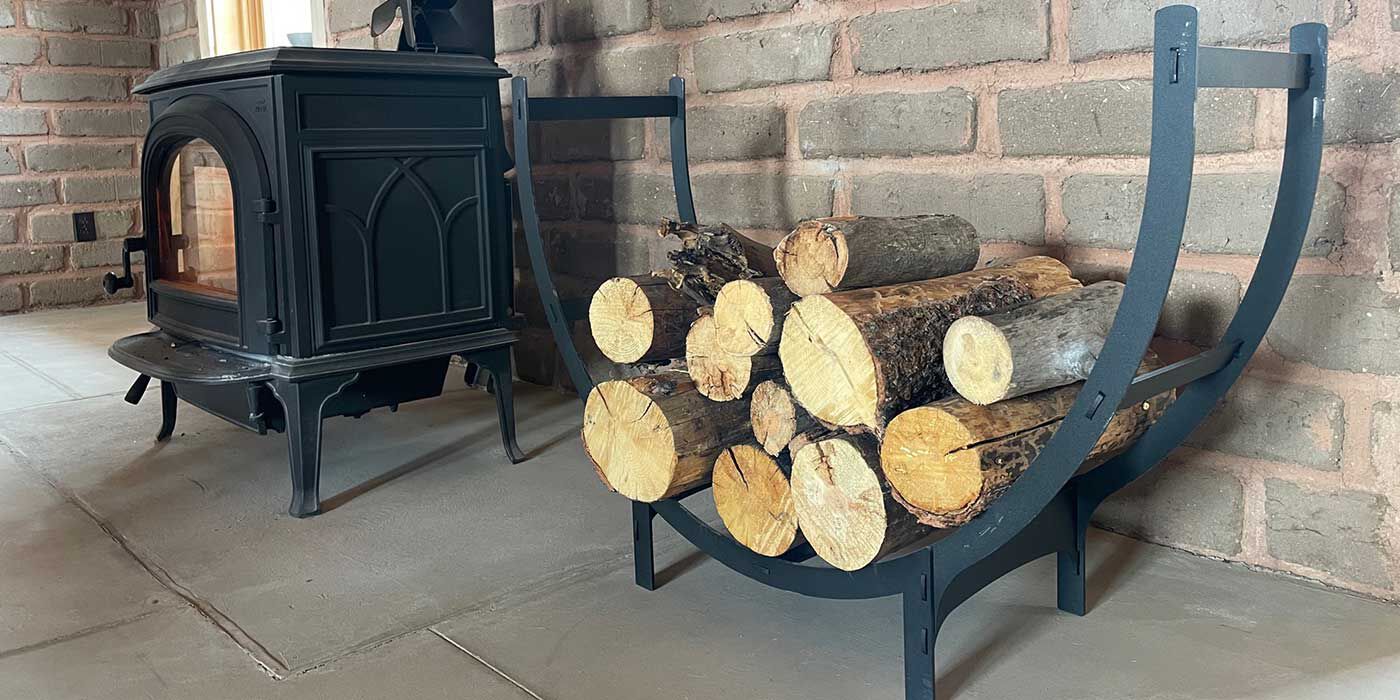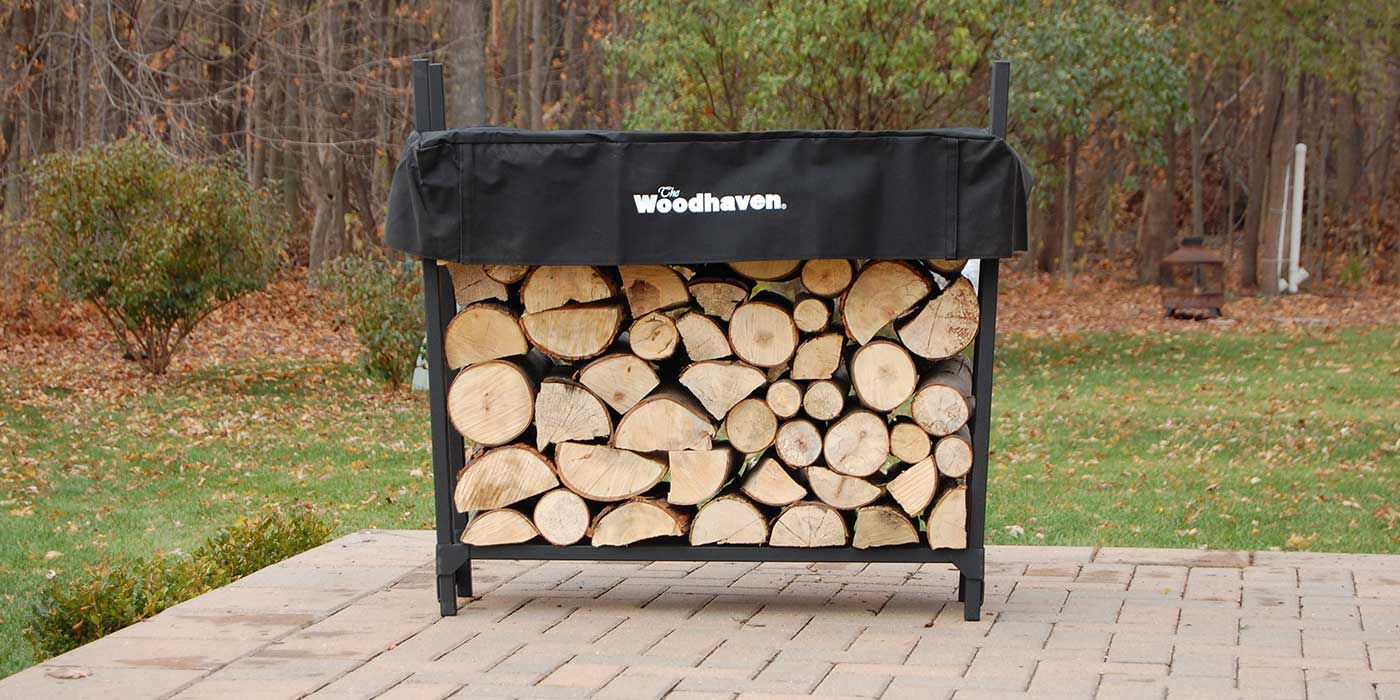By: Thomas Kearney, NFI Certified Master Hearth Professional
Last Updated: April 30, 2025
Did you know that it isn’t safe to burn freshly cut firewood? Fresh or “green” wood burns poorly because it contains too much moisture. It also produces an excessive amount of smoke, which is never ideal for a relaxing evening.
It’s important to burn wood that’s dry and seasoned. Properly seasoned wood logs burn hotter and generate less smoke and residues. In this article, we’ll explain everything you need to know about firewood seasoning.
What is Seasoned Firewood?
Seasoned wood has a low moisture content (usually below 20%).
It appears darker in color with a grayish tint and has visible splits and cracks in the end grain. It's also lightweight, since most of the moisture has evaporated.
Why Season Your Firewood?
Seasoned logs enhance the efficiency, safety, and environmental impact of using wood as a fuel source. Some of the most notable benefits include:
Better Burning
Green wood has a high moisture level and won’t burn efficiently. Dry firewood ignites easily and burns steadily, providing a reliable and consistent heat source.
Less Creosote Buildup
Seasoned wood creates less smoke and gases than green/wet wood. Built-up gas condenses as creosote, a flammable substance that can cause fires.
Creosote also corrodes your fire feature, leading to expense repairs.
Environmental Benefits
Green wood emits more pollutants than dry wood. The particulate matter and organic compounds released contribute to air pollution and health issues.
Seasoned logs burn completely and release minimal carbon monoxide and gases, resulting in a lower carbon footprint.
Easier Handling & Storage
Seasoned wood is lightweight and less likely to mold or rot. It’s easy to stack and stays usable for a long time.
How Long Does Seasoning Take?
The seasoning process can take anywhere from 6 months to 2 years, depending on the type of wood and conditions.
Generally, hardwoods (Oak, Maple, Hickory) need a year or more. Softwoods (Pine, Spruce, Fir) require about six months.
Here are the drying times for the most common wood types:
- Pine: 3 to 6 months
- Fir: 3 to 6 months
- Birch: 6 months to 1 year
- Juniper: 6 months to 1 year
- Maple: 6 months to 1 year
- Redwood: 1 year
- Oak: 1 to 2 years
- Elm: 1 to 2 years
- Hickory: 2 years
Check out this handy chart to determine the ideal seasoning time for your wood type.
How to Season Your Own Firewood
Follow these simple steps to properly season your firewood.
Step 1: Split
First, you’ll need to split your wood logs into smaller pieces to expose more surface area. Better airflow accelerates the air drying process.
Step 2: Stack
Stack your logs in a way that allows air to circulate around each piece of wood. Organize them in a crisscross pattern or leave gaps between the logs.
Find a sunny, breezy location to store your logs for faster drying. You can also stack firewood in a woodshed or under a shelter.
Step 3: Elevate
Keep your firewood stack off the ground using pallets or a firewood rack. This will prevent them from absorbing moisture from the soil.
Step 4: Wait
The seasoning process can take up to 2 years, depending on the type of wood you have and the climate you live in. Hardwoods are much denser with more water content and will take longer to dry out than softwoods.
Regularly check your logs by inspecting for cracks on the ends or using a moisture meter. Learn how to use a moisture meter with the United States Environmental Protection Agency's step-by-step instructions.
Keep Your Firewood Supply Organized
The best way to stack wood is with a firewood rack.
A well-designed firewood rack promotes air circulation around your logs, aiding in the seasoning process. By elevating your logs off the ground, you’ll also prevent termites, rodents, and other pests from invading your wood supply.
Keeping your logs neatly stacked ensures your outdoor pathways are clear and free from tripping hazards. Firewood racks can also enhance the overall style of your outdoor space, creating an upscale, uncluttered look.
Firewood racks are available in a variety of styles and sizes to match your space. Some models come with matching covers and others can support large tarps, so you can shield your logs from the rain and snow.
Shop Our Best Firewood Racks
Summary
- Burning freshly cut (green) firewood is unsafe and inefficient due to its high moisture content, which causes excess smoke and creosote buildup.
- Seasoned firewood—dried to below 20% moisture—is safer, burns hotter, and produces less pollution. It’s also lighter, easier to handle, and stores well.
- Seasoning takes 6 months to 2 years, depending on wood type and drying conditions.
- To season wood at home, split and stack logs in a sunny, breezy spot, elevate them off the ground, and wait until fully dried.
- Firewood racks aid in seasoning, prevent pests, and keep storage neat and stylish.
People Also Ask
Does stacking wood inside help it season faster?
No. Firewood should be seasoned outdoors first. Once fully seasoned, it can be brought inside.
Should a firewood rack be covered?
Ideally, yes—just the top. Covering the top protects against rain/snow, but the sides should remain open for airflow.
Can I store firewood against my house?
It’s not recommended. Woodpiles attract pests like termites and rodents. Keep it at least 3–5 feet away from structures.
How much wood does a standard firewood rack hold?
A typical 4-foot rack holds about 1/4 cord of wood. Sizes vary depending on your heating needs.
We’re Here to Help
Have any more questions? Call and talk with an NFI-certified expert today at 800.919.1904.
More Resources
Want to build a DIY wood fire pit? Here’s everything you need to know.
Explore the various wood stove styles and accessories to find the best fit for your home.
Discover the best tools and accessories for wood burning stoves and fireplaces.
 |
Tom Kearney has been a Technical Sales Representative at Woodland Direct for over a decade, where he has honed his expertise in gas, wood, and pellet appliances as an NFI-Certified expert. Tom's dedication to customer satisfaction is exemplified by his work with high-profile clients, including assisting SpaceX President Gwynne Shotwell in sourcing five stunning fireplaces for her Texas home. When he's not helping clients find their perfect fireplace, Tom enjoys hitting the golf course, skiing down snowy slopes, and exploring new trails on his bike. Call him or one of our experts in fire at 800.919.1904. |






